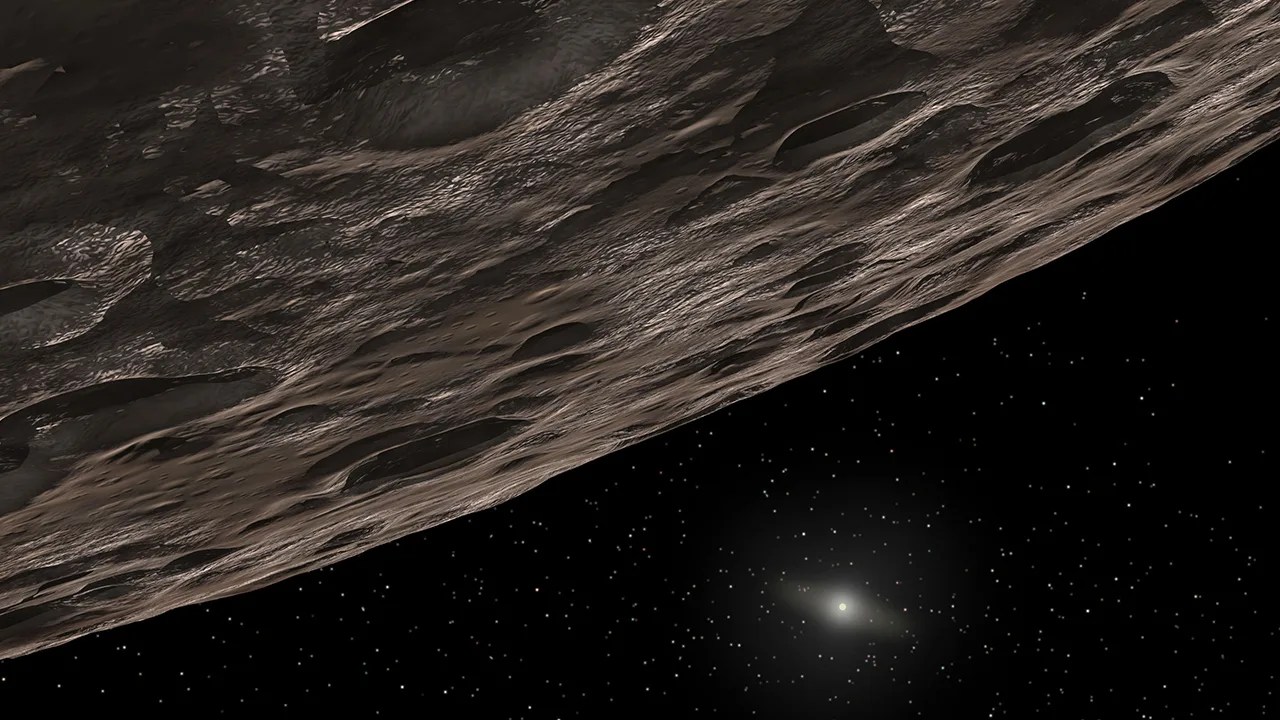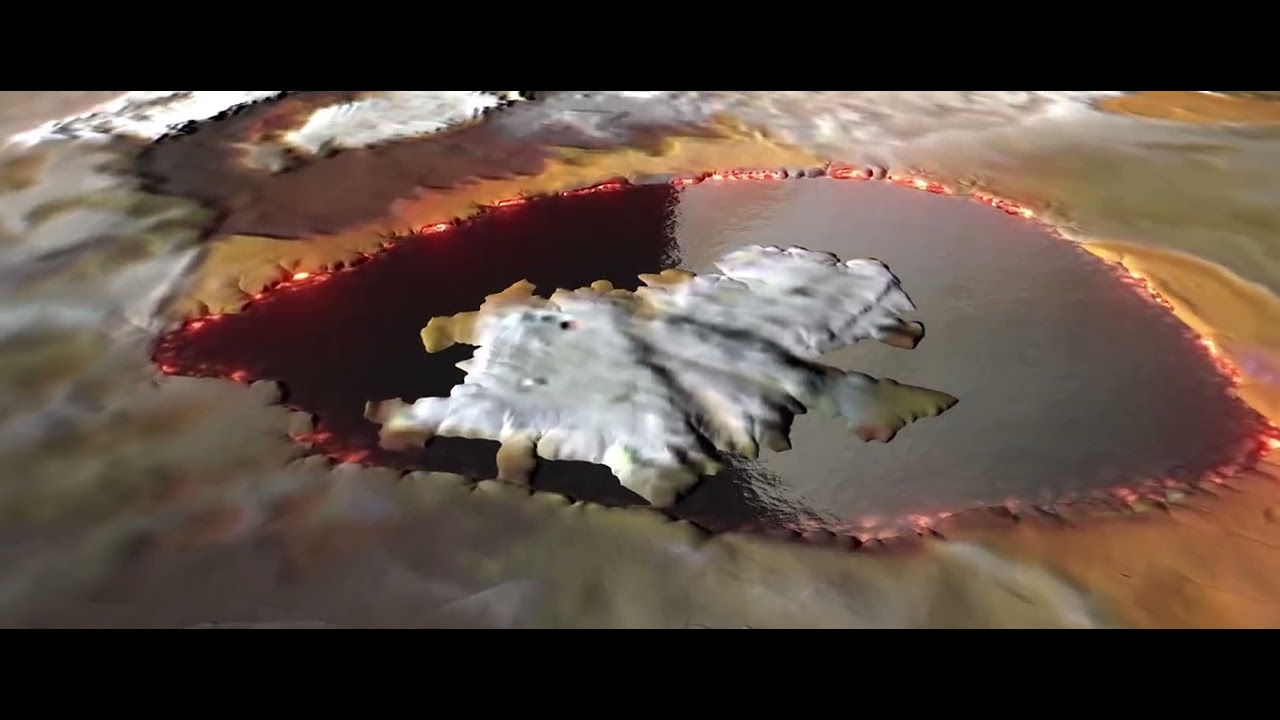7 min read

Billions of kilometers from Earth, beyond the orbit of Neptune, lies perhaps the most forbidding part of our solar system, a vast realm so cold and dark it sparks a frisson of dread among thoughtful astronauts. The Sun, so cheerful and warming here on Earth, is merely the brightest star in the night sky there. And it's so cold that the atmosphere of Pluto -- the only one of the nine planets orbiting so far from the Sun -- lies frozen on the ground most of the time.
A spaceship exploring the outer reaches of our solar system could go a long time without seeing much. And, indeed, for most of the past century astronomers figured there was little enough to see: only one small icy planet, Pluto, and its oddball moon Charon. Better perhaps to pass them by and head for a far-away star.
But wait! Maybe the outer solar system isn't so dull after all. Lately astronomers have found that the frontier beyond Neptune, far from empty, is swarming with thousands of dark and mysterious objects -- enough to make a star-bound explorer pause for a second look.
As seen from Earth those dim companions of Pluto appear to dark comets. It's hard to know exactly what they're made of because their insides are concealed by a layer of ruddy organic goop. Probably they're a mixture of ice, rock, and dust. Most are about the size of small asteroids (a few km to a few hundred km wide), and a few have emerged recently that are 30% to 50% as wide as the planet Pluto (2274 km). Indeed, say astronomers, it may be only a matter of time before observers spot one as big as Pluto itself.
The first of these strange bodies, which astronomers call Kuiper Belt Objects (KBOs), came to light in 1992, discovered by Dave Jewitt and Jane Luu -- a pair of scientists who didn't believe the outer solar system was empty. Beginning in 1987 they had doggedly scanned the heavens in search of dim objects beyond Neptune. It took five years, looking off-and-on through the University of Hawaii's 2.2 m telescope, but they finally found what they were after: a reddish-colored speck 44 AU from the Sun -- even more distant than Pluto! Jewitt (University of Hawaii) and Luu (UC Berkeley) wanted to name their find "Smiley," but it has since been cataloged as "1992 QB1."
That discovery marked our first glimpse of the long-sought Kuiper Belt, named after Gerard Kuiper who, in 1951, proposed that a belt of icy bodies might lay beyond Neptune. It was the only way, he figured, to solve a baffling mystery about comets: Some comets loop through the solar system on periodic orbits of a half-dozen years or so. They encounter the Sun so often that they quickly evaporate -- vanishing in only a few hundred thousand years. Astronomers call them "short-period comets," although "short-lived" is more to the point. Short-period comets evaporate so quickly compared to the age of the solar system that we shouldn't see any, yet astronomers routinely track dozens of them. It was a real puzzle.
Kuiper's solution was a population of dark comets circling the Sun in the realm of Pluto -- leftovers from the dawn of our solar system when planetesimals were coalescing to make planets. The ones beyond Neptune, Kuiper speculated, never stuck together, remaining instead primitive and individual. Nowadays they occasionally fall toward the Sun and become short-period comets.
It was a neat solution to the mystery, but with the arguable exception of Pluto, no one could find any members of the Kuiper Belt -- that is, until Jewitt and Luu did it in 1992. Since then astronomers have been discovering KBOs at a dizzying pace. The International Astronomical Union now catalogues 432 of them. And that's just the tip of the iceberg.
"Based on our surveys we think there are about 70,000 KBOs larger than 100 km across between 30 and 50 AU from the Sun," says Jewitt. If you added all of them together they would form a planet about one-tenth the mass of Earth. The Kuiper Belt is about 300 times more massive than the asteroid belt between Mars and Jupiter, he added.
Finding even 400 or so KBOs among the tens of thousands beyond Neptune is impressive. These faraway objects are surprisingly dark. Although they're icy, explains Jewitt, "most KBOs reflect about as much sunlight (4 - 7%) as a lump of charcoal." It's because of cosmic ray bombardment, which darkens and reddens their surfaces by breaking the bonds of molecules in the ice -- molecules that reform as complex carbon-based compounds. The organic goop makes good camouflage against the black of space.
The planet Pluto, itself perhaps a KBO, is an exception. "Pluto has a higher reflectivity (60%) than we suspect for other Kuiper Belt Objects," adds Jewitt. "But this is an artifact of size. Pluto has enough mass and gravity to retain a tenuous atmosphere from which bright surface frosts may be deposited on the surface."
Are there more Plutos out there, yet to be discovered? Jewitt thinks so. "We have known the size distribution of KBOs for some years," he says. "It's a power law with index -4, and it suggests that a few Pluto-sized objects exist, perhaps 5 or 10, of which we know just one."
Relatively large KBOs are already turning up among the many new discoveries. For example, last year Jewitt and colleagues found Varuna orbiting 43 AU from the Sun. Varuna is 900 km wide and nearly as large as the behemoth asteroid Ceres (933 km). Then came 2001 KX76, a discovery of the NASA-funded Deep Ecliptic Survey. 2001 KX76 was a sensation for a while last month when widespread reports credited it with dethroning Ceres as the solar system's largest asteroid. In fact, 2001 KX76, which is icy and lies 39 AU from the Sun, is not an asteroid at all. But no matter, 2001 KX76 is still big, perhaps 1200 or more km across.
Lately the technology for finding KBOs, both big and small, has become a lot more powerful. "Our CCD cameras are bigger and better, improving the efficiency of detection," says Jewitt, whose recent work is supported in part by a NASA Origins grant. "For example, we've been using a camera that has 24 times the area of the one we used to find the first KBO in 1992. It pulls in 24 objects for the price of one."
Perhaps soon one of those CCDs will record a real sensation: the next Pluto. "It could happen at any time," says Jewitt. After all, if we've learned anything in the past 10 years, it's that the outer solar system is not only dark, remote, and cold, but full of surprises as well.
Editor's Note: How big is 2001 KX76? To calculate the size of a Kuiper Belt Object (or any heavenly body that shines by reflected sunlight) three measurements are needed: distance, brightness, and reflectivity. The approximate distance and brightness of 2001 KX76 are known. Indeed, it's the brightest KBO found so far. But no one knows its reflectivity. Careful infra-red measurements of the object, as yet undone, are required for that. If the reflectivity of KX76 is 7%, the same as that of Varuna (a KBO for which the required IR measurements have been made), then 2001 KX76 is 1200 km wide. That would make it larger than Ceres and even Pluto's moon Charon (1172 km).







